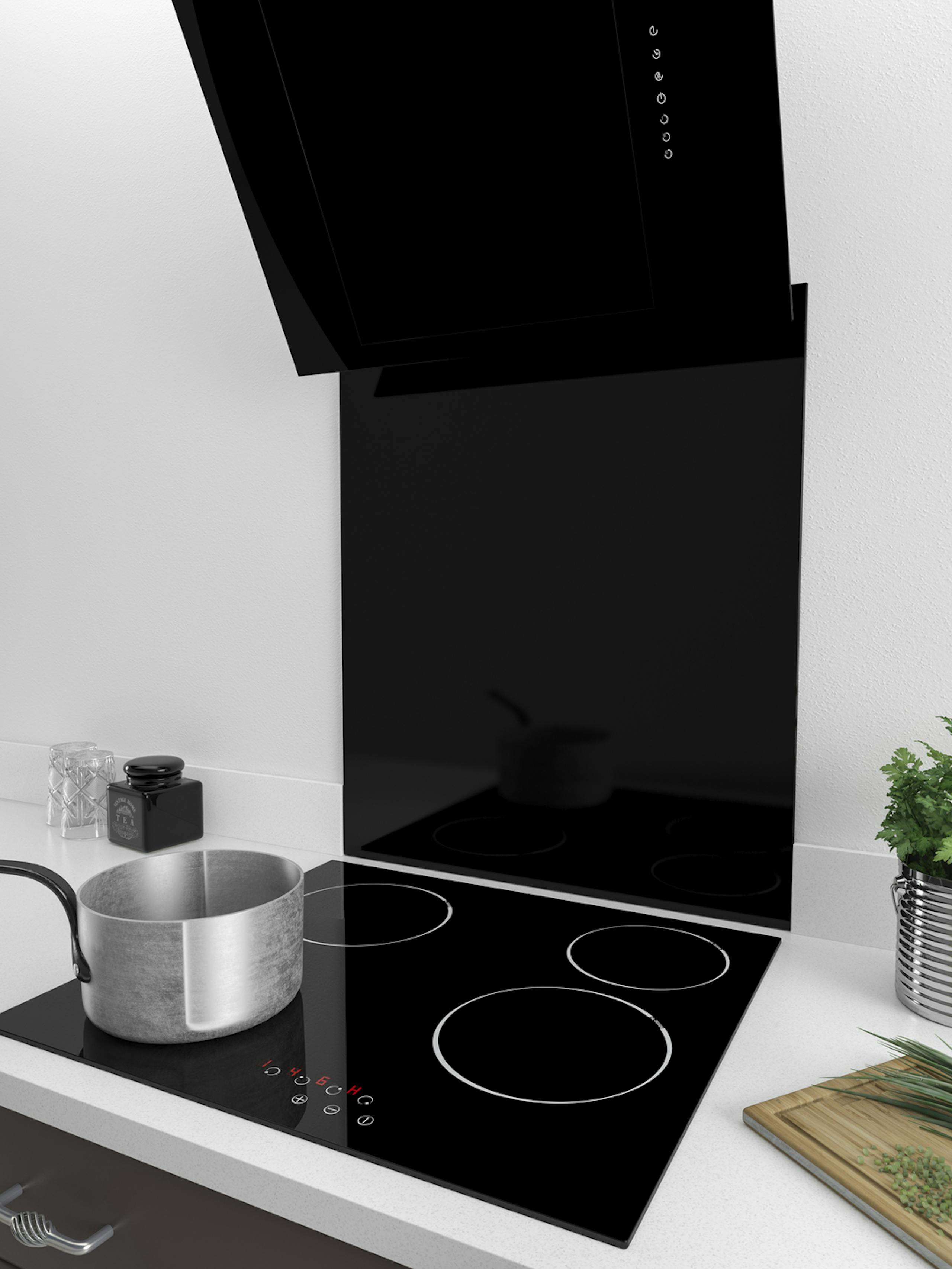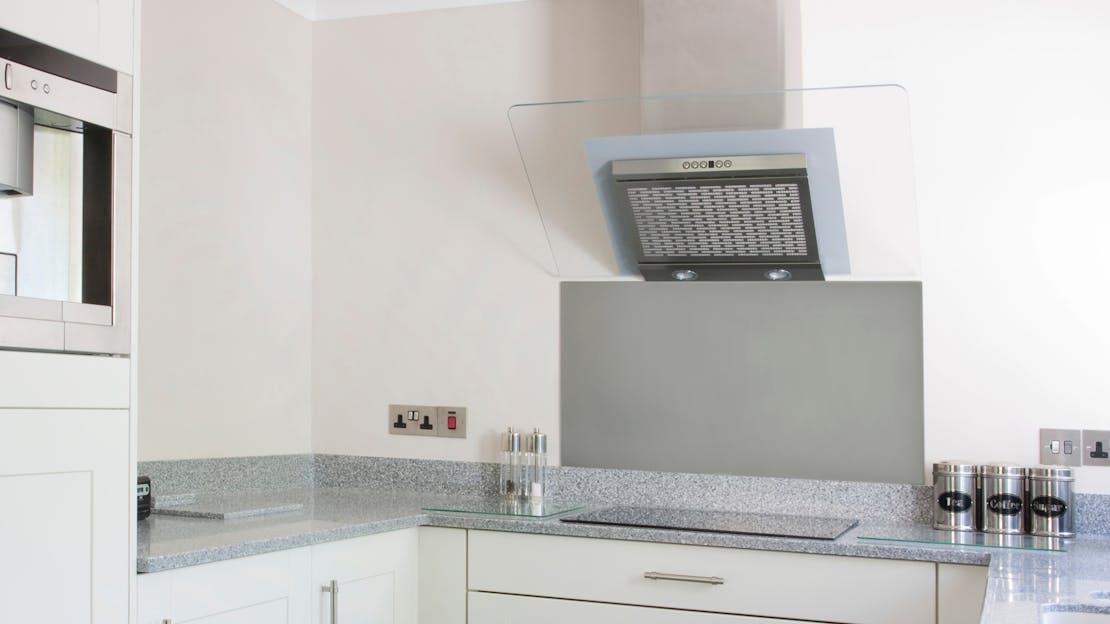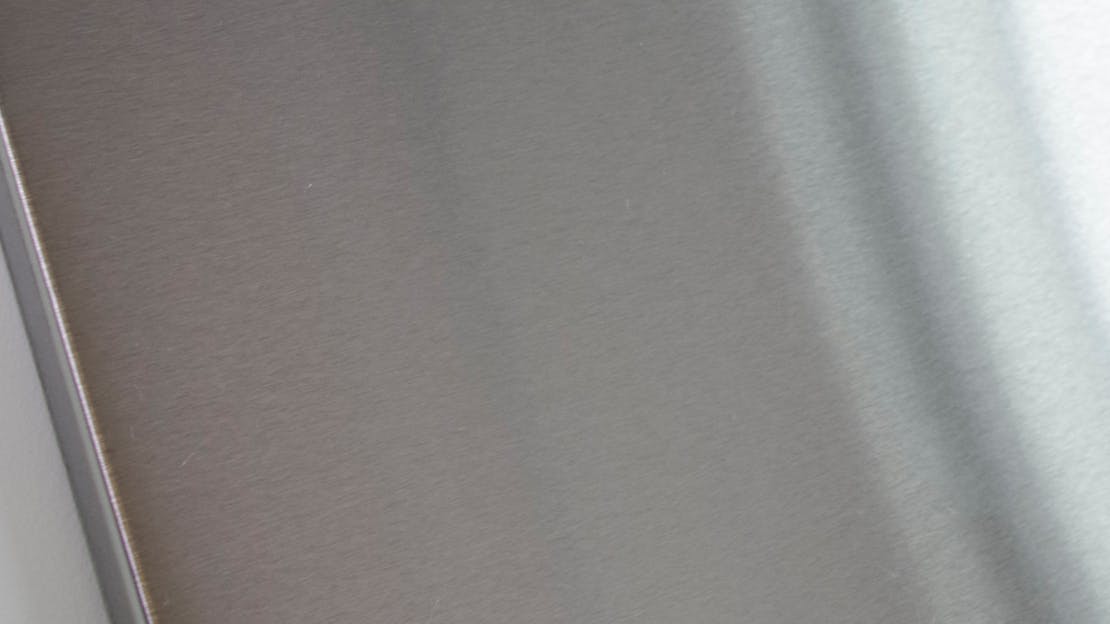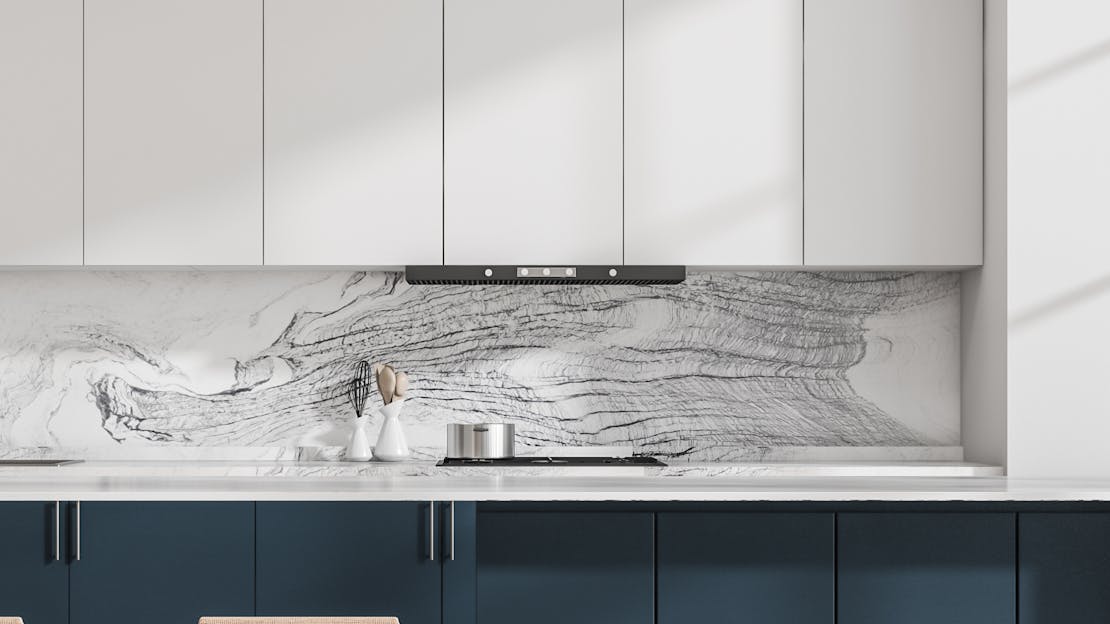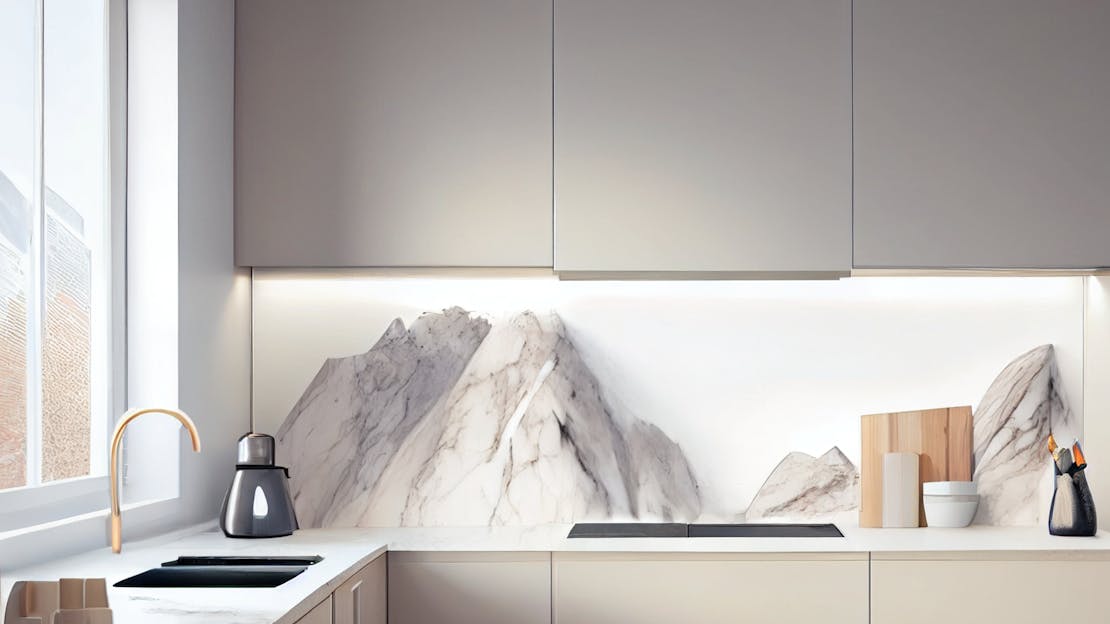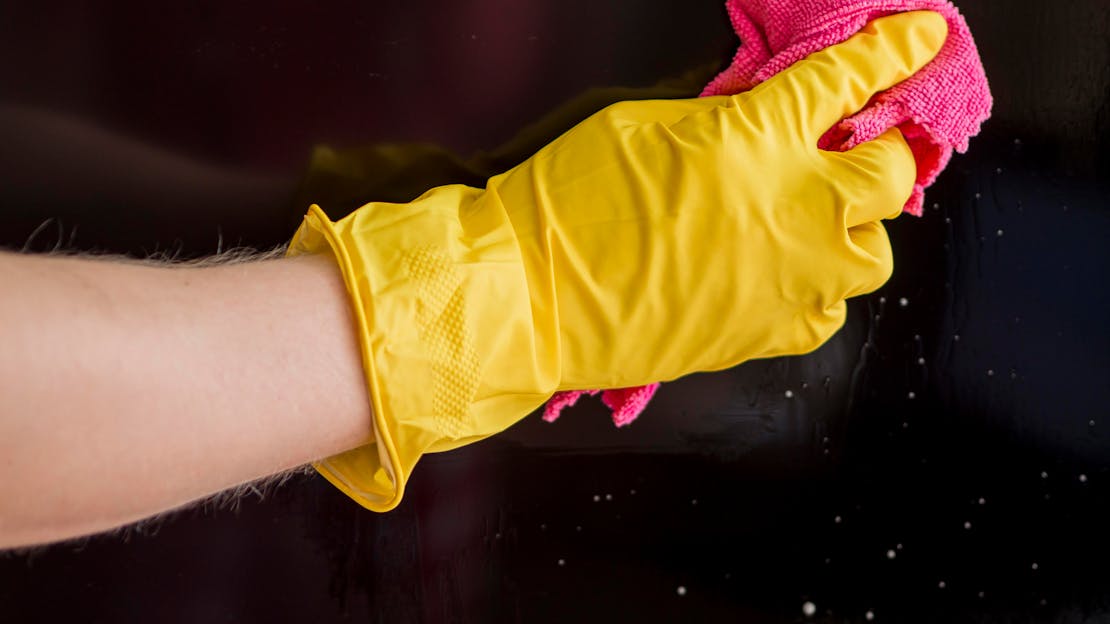
The Ultimate Guide to Cleaning Glass Splashbacks
Cleaning glass splashbacks in kitchens is essential to maintain their appearance and hygiene. Glass splashbacks can accumulate grease, food splatters, and fingerprints, but with the right cleaning techniques, you can keep them looking sparkling clean. Here's a detailed guide on how to clean glass splashbacks effectively:
Materials You'll Need:
- Warm water
- Washing-up liquid or glass cleaner
- White vinegar
- Baking soda
- Microfibre or lint-free cloth
- Soft sponge or non-abrasive scrubbing pad
- Razor blade scraper (if needed)
- Rubber gloves (optional)
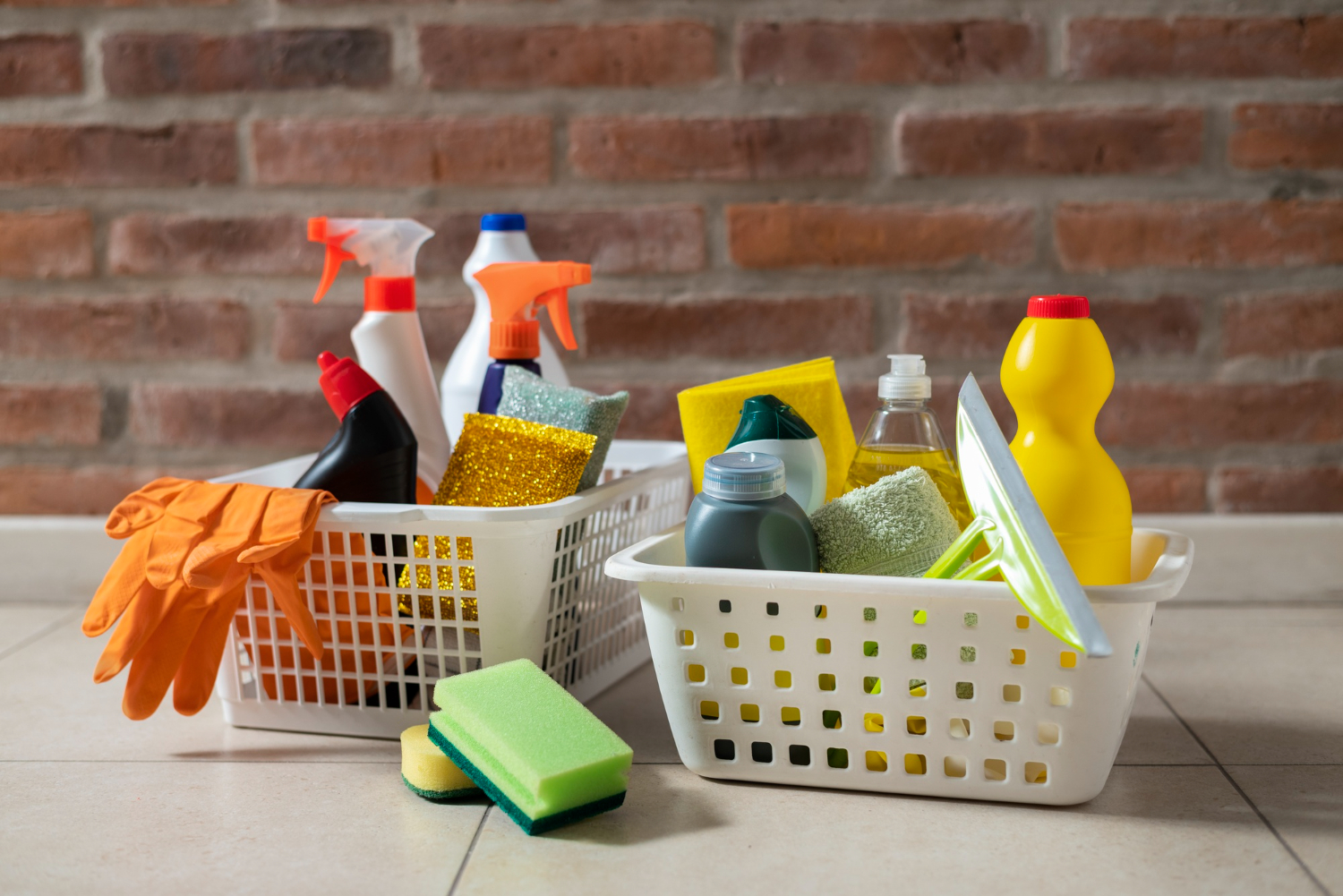
Step-by-Step Cleaning Guide:
Gather Your Supplies: Before you begin, make sure you have all the necessary cleaning materials on hand.
Safety Precautions: If you're using any chemical cleaning agents, ensure good ventilation or wear a mask if needed. You may also consider wearing rubber gloves to protect your hands.
Remove Loose Debris: Use a dry, lint-free cloth or a kitchen paper towel to wipe away any loose dirt, dust, or food particles from the glass surface.
Prepare a Cleaning Solution: Fill a bucket or spray bottle with a mixture of warm water and a few drops of washing-up liquid or a glass cleaner. Alternatively, you can use a solution of equal parts water and white vinegar.
Apply the Cleaning Solution: Spray the cleaning solution directly onto the glass splashback or dampen a soft sponge with it. Ensure the glass surface is evenly covered.
Scrub Gently: Using a soft sponge or a non-abrasive scrubbing pad, gently scrub the glass in a circular motion. Pay extra attention to areas with tough stains or splatters. Avoid using abrasive materials or scouring pads that could scratch the glass.
Rinse Thoroughly: Rinse the glass thoroughly with clean, warm water to remove any soap residue. Make sure to rinse the sponge or scrubbing pad as well.
Dry the Surface: Use a clean, dry microfibre or lint-free cloth to wipe down the glass splashback until it's completely dry. This step will help prevent streaks and water spots.
Address Stubborn Stains: If you encounter stubborn stains or dried-on residue, you can try these methods:
- Mix a paste of baking soda and water to create a gentle abrasive cleaner. Apply it to the stain, let it sit for a few minutes, then gently scrub and rinse.
- For extremely stubborn stains, you can carefully use a razor blade scraper at a 45-degree angle to scrape off the residue. Be cautious not to scratch the glass, and always keep the surface wet while using the scraper.
Polish for Shine (Optional): For an extra shine, you can buff the glass with a clean, dry microfibre cloth or even a newspaper.
Regular Maintenance: To prevent the build-up of stains and grime, it's a good idea to wipe down your glass splashback regularly with a damp cloth after cooking.
Remember, avoiding harsh abrasives and chemicals is essential to preserve the integrity of the glass surface. By following these steps and practising regular maintenance, you can keep your glass splashbacks in your kitchen looking pristine and sparkling.
MyAppliances BSB675 60cm x 75cm Black Glass Splashback
Frequently asked questions
Are glass splashbacks hard to keep clean?
How do you remove grease from a splashback?
What are the advantages of glass splashbacks?
What are the disadvantages of glass splashbacks?
What is the best cleaner for a kitchen splashback?
What should you avoid doing with a kitchen splashback?
What is the lowest maintenance splashback?
Should a splashback be shiny or matte?
How do you remove burn marks from a glass splashback?
How often should you clean a splashback?
Everything you need to know about Splashbacks
Everything you need to know about Splashbacks
Splashbacks serve as both a functional and aesthetic addition to your kitchen, protecting walls from splatters and spills while adding style to the space. Whether you prefer sleek stainless steel, elegant glass, or colorful designs, splashbacks offer endless design possibilities. Explore our articles for expert tips and maintenance advice tailored to enhance the functionality and visual appeal of splashbacks in your kitchen, ensuring a seamless and stylish culinary environment.
-
In this comprehensive guide, we'll explore different types, materials, benefits, and installation processes, empowering you to make informed choices and enhance the beauty and functionality of your home with splashbacks.
-
Offering a gorgeous focal point, our splashbacks are available in an array of vibrant colours. Manufactured in stainless steel and glass, splashbacks like ours offer excellent value for money.
-
Splashbacks are not merely a protective barrier for your kitchen walls; they are a style statement, an essential component that ties the room together. They serve as a shield against the inevitable splashes, stains, and spills that accompany meal preparation, but they can also elevate your kitchen's design and ambiance. In this article, we delve into the science of splashbacks, exploring the intriguing balance between form and function.
-
Glass splashbacks are available in a host of shades – and they offer an easy way to breathe life into your space, particularly if you like to switch up the aesthetic of your kitchen frequently.
-
Cleaning glass splashbacks in kitchens is essential to maintain their appearance and hygiene. Glass splashbacks can accumulate grease, food splatters, and fingerprints, but with the right cleaning techniques, you can keep them looking sparkling clean. Here's a detailed guide on how to clean glass splashbacks effectively.

